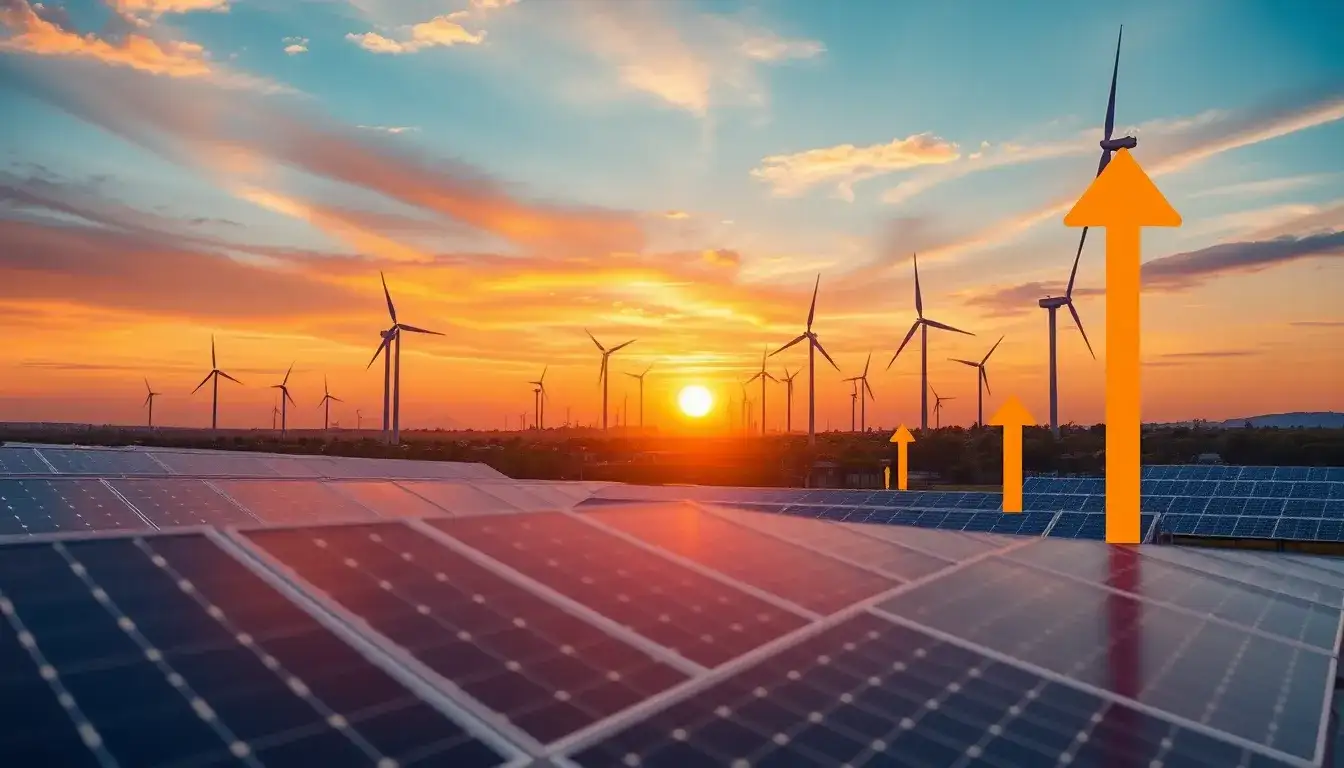
Cao Zhigang of Goldwind Technology: Reconstructing “Energy Value” to Drive Industry Innovation with “New Value”
On March 22, the “2025 China Wind Energy Equipment Key Enterprises Leaders Summit” was held in Hangzhou, jointly hosted by the Wind Energy Equipment Branch of the China Agricultural Machinery Industry Association and the Wind Energy Professional Committee of the China Renewable Energy Society. The summit focused on the theme of “Collaborative Breakthroughs and Ecological Co-construction,” discussing pathways for high-quality development in the wind energy sector under the new circumstances. Cao Zhigang, President of Goldwind Technology, was invited to share his core insights on the value of new energy.
Cao Zhigang emphasized that by the end of 2024, China’s cumulative installed capacity of new energy is expected to reach approximately 1.45 billion kilowatts, accounting for about 43% of the total, marking a significant milestone as it surpasses coal-fired power for the first time. The transition of new energy from a “supplementary source” to a “main source” is an inevitable trend. However, he cautioned that achieving the goal of “over 1.2 billion kilowatts of wind and solar installed capacity by 2030” requires pushing the industry towards evolution with higher standards and demands. For example, the stringent requirements for voltage/frequency support and grid oscillation suppression have evolved from the “low voltage ride-through” standards established in 2011, reflecting a fundamental shift towards enhancing the quality of electricity generation and reshaping the new energy ecosystem.
With the transition from subsidies to a “zero subsidy + competitive pricing” model, the market electricity price will serve as a test of the true value of new energy as a core player. At the policy level, the National Development and Reform Commission and the National Energy Administration have issued a notice on deepening the market-oriented reform of new energy grid pricing, emphasizing the need for comprehensive marketization of new energy. This will significantly accelerate the pace of the new energy market; however, a more active and mature market will be the true carrier for new energy to become the leading source.
The new energy industry must adapt to and lead change, reconstructing the “value” of energy, using “new value” as the driving force for technological and commercial innovations within the sector. Value co-existence involves treating fossil fuels as collaborators. The construction of a new power system should not be based on the belief that “new energy is supreme.” Instead, it is essential to recognize that, under current conditions, fossil fuels still play a crucial role in supporting grid regulation, alleviating the flexibility pressures that high proportions of new energy integration can create. Fossil energy should not be viewed as the “enemy” of new energy; rather, only through joint exploration and innovation can we achieve a balanced approach to the triple goals of “safety, economy, and low carbon” in the new power system.
Reconstructing value means focusing on generating electricity where it is most needed. Once new energy enters the market fully, wind power generation will no longer be about “quantity,” but rather about prioritizing the needs of the grid, ensuring it can generate when required and maximize output—this is the definition of “high value.” Companies must adopt the mindset of electricity service providers, promoting technologies and products that support grid construction, enhancing prediction accuracy, matching demand with generation curves, and optimizing trading strategies and flexible adjustment capabilities.
Value aggregation involves multiple power sources working together. Currently, the grid dispatch system views wind and solar as “mutually exclusive sources” due to their differing output characteristics. However, through collaborative innovation, integrating wind, solar, and storage in both physical and virtual trading environments has the potential to enhance the grid’s supply capacity, forming a “round-the-clock power source combination.” Additionally, actively exploring flexible configurations of various sources can create a synergistic effect, combining centralized power, distributed power, and independent power sources.
Focusing on value means delving deeper into offshore wind energy. The value of offshore wind is not only in providing more green power but also in serving national marine strategies and driving the “blue economy.” For instance, the demand for large offshore wind turbines accelerates the iteration and cost reduction of carbon fiber technology, thereby promoting its application across various industries. It is hoped that the entire society will provide broader developmental space for offshore wind energy from policy and industry perspectives, creating more possibilities for marine value transformation.
In the pursuit of genuine value, it is crucial to clarify the development path of green chemicals. Currently, the rapid evolution of the green chemical sector has brought wind power-based hydrogen and methanol into the spotlight. However, wind power should enhance the large-scale application of green fuels rather than prioritize the development of numerous green chemical projects at the expense of proper focus. Furthermore, there is a noticeable homogenization in domestic wind-to-green hydrogen and methanol projects, leading to trends of over-investment and competitive redundancy, necessitating a return to the fundamental needs and rhythms of the green fuel industry. The ideal state for healthy industry development lies in the synergy and mutual benefit between wind power and green chemicals.
Value transmission strengthens development confidence. Although the path of the new energy industry has been fraught with challenges, the upward spiral trend remains unchanged. It is essential for companies across the supply chain to collaborate under pressure and seek breakthroughs together. Financial institutions are also encouraged to support the industry by providing financial modeling assistance to facilitate project financing. The establishment of a connection mechanism between green certificates and carbon trading markets is expected to maximize the value of green electricity, highlighting the immense value of the new energy market. The Chinese new energy industry is undergoing a transformation from “policy-driven” to “market-driven,” and from “following changes” to “leading transformations.” As the industry ecosystem evolves rapidly, it is imperative to reassess the value positioning of the sector and aim towards directions that hold greater value.







